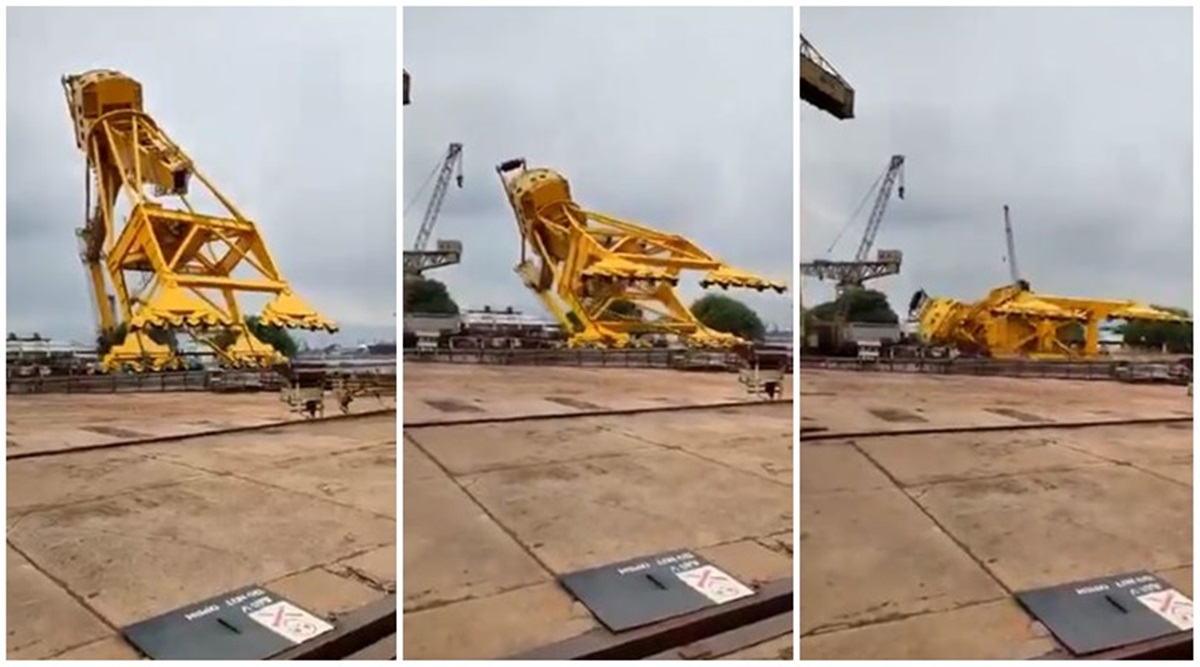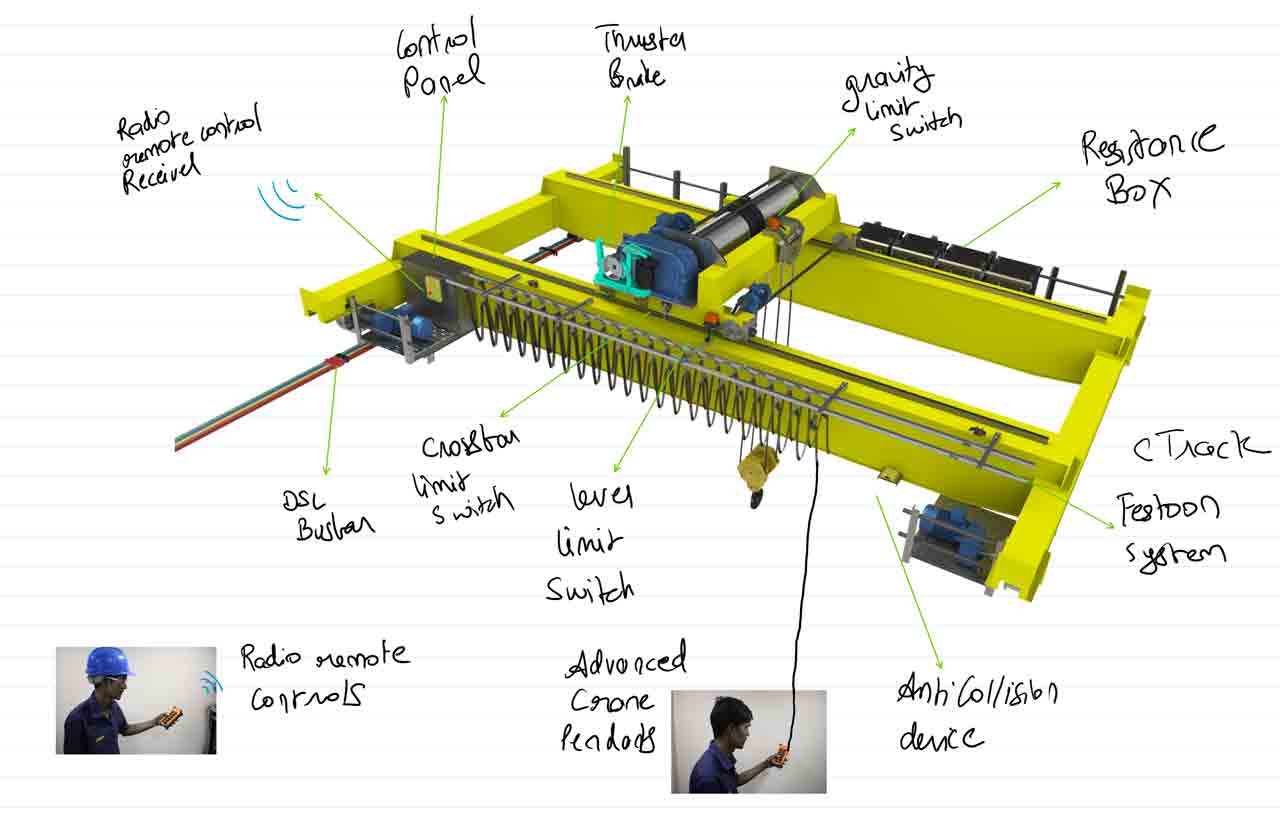Vishakhapatnam Crane Accident and How Crane Monitoring System Could Have Helped.

In todays Blog we will read about the
Vishakhapatnam Crane Crash and How Crane Monitoring System Could Have Helped
What preventive measures can taken by the Crane Monitoring System to avoid the crane crash?
So if you want to make sure that your knowledge of the Crane Monitoring System
is up to speed, you should get a lot of value from today’s content.
- Crane Monitoring Data Analytics, Reports and Alerts
- Functions of Crane Monitoring System
- Conclusion
What happened at Vishakapatnam Shipyard Crane Accident.

At Vishakhapatnam, the shipyard crane had a fatal accident while the workers were
inspecting the crane.
The overhead crane base got separated from the cabin of the crane, because
the crane was in the middle of a lift of a 70 ton weight.
Due to this, the crane collapsed on the ground and made a huge bang.
Although, the crane was handling 70 tons of load,
the crane can handle 125% of this load. During the trial round of the inspection,
the crane has handled around 90 tons of load.
But in the final round of the inspection, the 70 ton of the load was handled and carried
up to 30 meters. And then the crane collapsed between the building-dock and spillway berth.
Crane movement tracking is very essential for the safety purpose and also it monitors
the heavy material handling. For this type of situation, the crane monitoring system is very
effective.
Crane monitoring system does continuous supervision and advanced data analytics of operations,
wear and tear,
fault detection, analysis and alerts.
Crane Monitoring Data Analytics, Reports and Alerts
There are two main functions of the crane monitoring data analytics:
- It creates a dashboard and report for daily production and operations information.
- It indicates the alert signal or creates an alarm sound to notify that there is some fault in the crane.
A specific algorithm is used in the system to monitor the specific behaviour of the electric motors and brakes effectiveness. Any variation above a particular tolerance will raise an alert signal to avoid the breakdown, also the preventive measures or repairs can be indicated.
Functions of Crane Monitoring System

-
Motor Voltage and Current Monitoring
It monitors the hoist, cross travel and long travel motor conditions. It detects any abnormalities or any failure in the motor operations. Hence, this will avoid the breakdown in the motors. -
Motor Temperature Monitoring
This function is very important as it will monitor the temperature and prevent the burnout of the motor. The system will send the alert message if it goes beyond the safe limit. -
Crane Operation Usage Monitoring
It will keep the track record of how many times the crane has been used. Later, this information is used to measure the operational efficiency and remaining service life of the crane. -
Motor Overload and Load Monitoring
It will monitor the overload and actual load by using the combination of the current and the load sensor. This tracks the crane usage within specified load condition. This is the main function that can prevent the Vishakhapatnam incident. The monitoring system would have sent a high alert of the overload of the crane. So that the worker would have been alert about the situation. -
Motor Brake Fault Monitoring
The air gap is monitored using the sensor. If it goes beyond its safe limit, then it will send an alert message. -
PLC, SCADA monitoring
The monitoring system can be interface with the automation system for monitoring of control parameters, faults and status, etc. This will offer detailed information about the crane operating conditions and failures. -
Safe Design Working Period(SWP) Monitoring
The crane long term safe design working period is calculated using the operational history, CDF and load conditions. -
Crane Rope Faults
This function will avoid the rope fault, load drop and other safety risks.
Conclusion
To maintain a safe working environment Crane Monitoring System is a necessary thing that needs to be installed in the crane. The crane monitoring system will give an alert before any incident occurs so that the preventive measures can be taken early.
Follow us on YouTube.